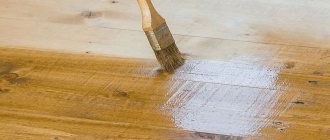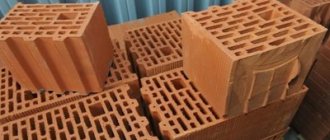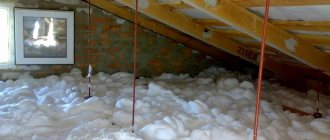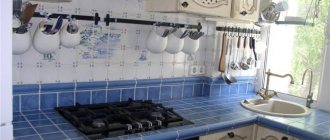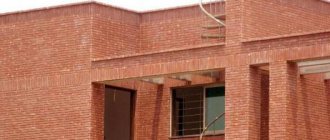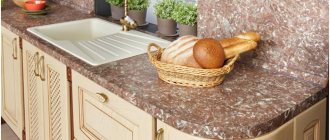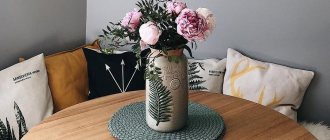The kitchen is the most visited place in the house. And it is important, even at the planning stage, to think about what this room will look like, including the materials used to make the main elements. Today, the most budget-friendly, functional and ergonomic option are plastic kitchen countertops, reviews of which are mostly positive. Let's consider the advantages and disadvantages of plastic directly for the kitchen, as well as the types and features of caring for this material.
What is a plastic tabletop?
The plastic tabletop is an economy class option. This material can be imitated to resemble marble, granite, wood, quartz, and the cost will be six times cheaper than artificial or natural stones.
The basis of tables with a plastic top for the kitchen is chipboard or MDF, which can be of different thicknesses. Chipboard material under high pressure (postforming method) is combined with a thin but durable layer of HPL plastic, which is a decorative option. At the same time, the edges are carefully bent over the edge, and a flat and smooth surface is obtained.
HPL plastic consists of several layers of kraft paper, which are pressed together under high pressure and impregnated with resins. Thus, the material is reliably protected from moisture, mechanical damage and burnout. The quality of the material depends on the manufacturing technology.
Dimensions
It is necessary to take into account the size of the surface and how much it should protrude above the facades.
As a rule, the width of the lid does not exceed 60 cm, while the depth of the cabinets varies between 56–58 cm. It turns out that the protrusion in front is about 3 cm, and in the back 1 cm. This is enough so that when working you do not touch the handles of bedside tables and protect communications carried out behind the furniture wall.
Of course, there are also non-standard solutions. For small kitchens, it is permissible to install narrower furnishings (from 46 cm), and then the lid is selected to match them.
The length of the surface can be different and depends on the dimensions of the set and the design of the room. There are projects in which the tabletop smoothly flows into a window sill or bar counter. So we can’t talk about any fixed values: even in standard apartments these indicators differ.
pros
Plastic countertops for the kitchen, photos of which are presented above, have many advantages in addition to their low cost.
The advantages of a plastic kitchen are as follows:
- affordable price - for example, the cost of a domestically produced laminated board measuring 60 x 24.5 cm and 28 mm thick can be purchased for 1,500 rubles, 38 mm thick and 3 m long - 4,000 rubles;
- a variety of colors, textures and decors from classic style to trendy high-tech;
- high-quality material lasts a long time, does not fade and is not subject to mechanical stress;
- the material is not afraid of high temperatures (you can even place hot dishes on it), is easily cleaned of dirt and does not absorb moisture or odor;
- plastic is resistant to chemical treatment.
Additional advantages include the fact that any design or even a photograph can be printed on the plastic surface.
Marble
Undoubtedly, one of the most aesthetic materials for interior decoration. A marble countertop will give the entire kitchen ensemble a nobility and respectable appearance. Marble does not tolerate significant temperature changes. This is cold material. It is not recommended to place hot dishes as they will leave stains on it. The porosity of this material ensures instant absorption of coloring pigments from coffee or carrot juice spilled on the countertop. A trace of a marker left by a child that cannot be removed from the surface of the marble can ruin your mood for a long time. If marble still captivates you with its beauty, we recommend regularly using special wax-based protective products that retain moisture and protect the product from various contaminants.
Minuses
Despite the obvious advantages of a plastic-coated countertop, the material also has disadvantages.
Disadvantages of using plastic in the kitchen:
- in appearance this material is inferior to stone and wood, it does not look so natural and organic;
- chipboard material is not durable; under constant exposure to water, the plastic can become deformed and swell;
- the weakest point of such tabletop material is the joints, which should be further processed or seals attached;
- plastic cannot be restored, unlike artificial stone, scratches on which can be easily polished (it is better to use cutting boards on such a surface).
Cracks
Cracks on the surface of the countertop are the most common reason for its complete replacement. As the material most susceptible to negative influences, the top layer will certainly become unusable after some time. And the thinner and cheaper the material of the top layer of the countertop, the sooner it will begin to become covered with cracks.
If even small cracks appear on the countertop, urgent repairs are required - otherwise the crack may grow larger, and then the panel will no longer be repairable.
Before you begin work on restoring the countertop from cracks, it is necessary, in principle, to assess the feasibility of such work.
A wide crack in the top layer across the entire tabletop makes repair impractical. Even the most painstaking work will inevitably crack again after a while.
Glue is taken into the syringe and the crack is filled along the entire length. If it is very thin, a needle is put on the syringe for more precise coating.
If it is shallow and small, we proceed according to the standard scenario.
We clean, degrease, apply wax, polish. Additional painting and varnishing as needed.
It is recommended to immediately apply wax of a suitable shade; due to the large size of the cracks, even professionals are not always able to restore the uniform color of the surface.
A day later (after the glue has dried), the restored area is painted over in a suitable tone.
Types of plastic kitchen countertops
The plastic that is used for application to chipboard or MDF can be of two types: High Pressure Laminates (HPL) and Cotinuous Pressed Laminates (CPL). The first option is made under high pressure, during which several layers of paper are compressed; it is of higher quality and more durable. The second type of plastic is processed under low pressure, so its quality indicators are somewhat lower. When choosing, you should take into account the brand of plastic, which may affect the price of the finished product.
Also, plastic countertops can be of two types:
- from ready-made laminated boards of standard sizes of domestic or European production - the country of origin does not matter much here, since both Russian and foreign companies pay close attention to the quality of their products;
- A kitchen table with a plastic top can be made to order - this option will cost more, but you can choose the decor, finish, shade and other elements yourself.
Pay attention to the material from which the tabletop is made
Interesting decor for a chipboard tabletop
Initially, all countertops for kitchen sets were made of wood. But with the introduction of new technologies into the production process and the advent of modern materials, the finishing of kitchen countertops has become extremely diverse.
What types of kitchen countertops are there, and what material is preferable for their manufacture:
- Countertops made of artificial stone are a durable option for finishing a work surface, but the price for such a finish is quite high.
Important. Countertops made of artificial stone cannot withstand contact with hot objects - you cannot place a pan from the stove on such a surface.
- Chipboard coverings finished with plastic are the most popular type of kitchen countertops today. This is due to the affordable cost, relative strength and a wide selection of colors and finishing textures;
- Countertops decorated with ceramic tiles are used quite rarely, since the overall design of the kitchen must match the decor of the kitchen surface. For example, retro decor with ceramic tiles on the kitchen floor and walls;
Stainless steel table top
- Stainless steel for countertops is more often used in the design of professional kitchens, but at home it is simply impractical to use it for finishing. As you can see in the photo, such coverings give the kitchen decor a too official and uncomfortable look.
- Solid wood countertops are used in the design of designer kitchens made from natural solid wood and are quite difficult and expensive to maintain;
- Laminate countertops are the most budget option for kitchen coverings;
- Acrylic kitchen surfaces are a relatively new option for kitchen coatings, but deserve attention due to their durability and functionality;
- Glass worktops are used only in designer kitchen sets and in kitchens where daily cooking is not expected. Since even tempered glass is still a fairly fragile material.
Advice. Spectacular glass inserts would be quite appropriate in the kitchen decor, but not solid coating arrays.
The glass worktops around the sink look impressive and original.
What are the main points you should pay attention to when choosing a kitchen countertop:
- Resistance to moisture - because the surface is washed very often;
- The surface must withstand aggressive detergents;
- The ability to install the covering yourself, without resorting to the expensive services of carpenters;
- Recently, solid wood countertops have become very popular. Fewer joints make the surface stronger, more durable and easier to clean;
- Naturally, the design of the countertop should be harmoniously combined with the overall design of the kitchen.
Important. Since many household appliances are built into the surface of the countertop, it is necessary to take into account that the surface can withstand temperature changes (around the stove). It was also resistant to moisture (around the sink).
- When installing the countertop yourself, it is advisable to watch the video installation instructions, which will greatly simplify and facilitate the work.
Read also the article about kitchen countertops.
How to choose and install
The Russian market has a fairly wide range of plastic countertops, both domestic and foreign. There are standard sizes of 60 x 224 cm and 62 x 305 cm. If necessary, you can choose the size yourself, which can vary from 2 to 4 m with a thickness of 28-38 mm.
The most budget option is a wood-look plastic kitchen countertop made of CPL (low-pressure plastic) material. Despite the affordable price, the quality indicators are low. It is better to choose HPL plastic. Although it is visually impossible to distinguish one option from another, only a specialist can do this. When choosing, you should pay attention to this most important indicator.
Installing a plastic countertop is not difficult, but for high-quality installation it is better to contact a specialist who will adjust the dimensions to those required for a particular room. To adjust it to size, MDF or chipboard is sawn, but if chips or cracks have formed in place, they cannot be eliminated, so such work should be carried out with special care.
How to install a plastic tabletop yourself?
- All kitchen elements must be level and positioned strictly horizontally. To correct the level, you can use spacers, wedges or legs if they are provided by the manufacturer.
- Markings, which include protrusions on the walls, are applied with a pencil or marker. The gap between the wall should be no more than 5 cm.
- The slab is cut using a jigsaw or hacksaw. For ease of use, a guide bar is used. You can avoid chips and cracks when sawing by using masking tape, which is attached along the line where the cut will be made.
- The cut area is processed with a file. Thus, all irregularities are removed.
- The places of cuts and joints are treated with silicone sealant; if necessary, this is done using metal strips. The distance from the wall is covered with a plastic plinth for kitchen countertops, which is selected according to the color and design of the furniture.
Experts note that the service life of a plastic kitchen depends not only on the material of manufacture, but also on the quality of installation.
Scuffs
Scuffing is one of the easiest defects to eliminate. The depth of the abrasion is small, just rub the damaged area with a furniture felt-tip pen. You should not work it directly on the surface. It is recommended to first paint a soft cloth, such as silk, with it. And then use this rag to thoroughly treat the abraded area.
Before you begin repairing the product, you should conduct a small diagnostic and assess the nature of the damage.
In this simple way you can deal with shallow abrasions. If the size of the defect is too large, we paint the surface with a felt-tip pen of the appropriate shade, and then polish the resulting area with a piece of cloth.
Using this technique, it is possible to blur the boundaries of processing with new paint and smooth them out visually.
If it is necessary to restore a varnished surface, before painting, use fine sandpaper to thoroughly clean the area of wear, degrease it, and only then paint. After the furniture marker has dried, we coat the work area with varnish, which we also polish 16-18 hours after application.
To avoid new scratches, it is better to cover the surface with a protective compound or transparent film.
Plastic kitchen design
A plastic kitchen countertop (according to reviews) is the best option, since the range of products is so wide that you can choose the design at your own discretion. Facades made of this material easily fit into any style.
Types of kitchen design made of plastic:
- Modern style. A kitchen with curved and framed facades looks best. It is these non-standard shapes that can fit into a kitchen with an unusual layout. It is best to choose a plastic facade in a chameleon color. It changes color intensity depending on the lighting, the play of colors creates an unusual look for the room.
- Classic. In this design, it is better to give preference to natural materials or a plastic kitchen countertop with a wooden look. There should be no metal inserts or gloss. Curly handles (brass or bronze) will look impressive in such a visit.
- Modern. This style is not simple or cheap. It should combine clarity of form, harmony and grace. The best option would be corner plastic kitchens made of MDF and PVC film.
additional characteristics
In addition to material and dimensions, there are other important parameters that affect the appearance and cost of the finished product.
- End Finishing – Standard edge finishing is included in the cost of the tabletop itself. But if you want a curly seal, you will have to fork out more.
- Connection of parts - fragments are combined by using a T-shaped profile made of aluminum alloy or joint-to-joint with or without a euro-cut tabletop. Each option has pros and cons, so you need to decide this issue for yourself “on shore”.
- Type and color of coating – a matte surface is more practical than a glossy one. This applies to any base. The dark color looks impressive, but is difficult to maintain on a daily basis.
- The presence of sharp corners - the fewer sharp protrusions, the more convenient it is to move around the room. This is especially true for a small area.
Features of operation
A plastic tabletop requires special care. Any dirt from its surface is removed with a damp cloth. You can use detergents, but without abrasive particles. You should refrain from using metal sponges or hard brushes, which can scratch the surface. When slicing, you should use a board to avoid scratches from the knife. When scratches occur, moisture penetrates the chipboard layer and causes it to deform or swell.
The weakest point of a plastic kitchen is the joints, which must be treated with sealant. Also important is the plinth, especially at the junction of the tabletop with the apron.
If you place a hot frying pan on a plastic surface, nothing will happen. But with prolonged thermal exposure, the tabletop can still become deformed. Therefore, it is better to use special hot mats.
Repair or change
The first important question when a defect is discovered is the feasibility of applying restoration work. Is it worth it? Or it would be easier to buy a new countertop. Many things speak in favor of restoration:
The price of new furniture can hit your pocket hard. Not everyone can afford to replace furniture at the slightest damage. For restoration you only need to buy consumables and put in a little effort and patience.
Secondly, buying new furniture will require time to re-install the chipboard surface. This will take more time than restorative procedures.
Inspect the crack carefully. A shallow crack or cracks are very easy to fix, spending a minimum of time, effort and money.
Well, the last important question: “Will I do the restoration of cracks myself?” “Or maybe I could call a specialist, he would do it quickly and efficiently?”
Plastic countertop for the kitchen: reviews
A plastic kitchen is presented in reviews as a budget-friendly and quite successful option for the home. Users note not only its low cost, but also its convenience and ease of installation, and a fairly long service life with proper use. Its low sensitivity to mechanical damage and heat resistance were also noted. But still, users advise not to use the tabletop as a hot plate or cutting board, since if scratches form, the surface cannot be restored.
In general, reviews of plastic kitchen countertops are positive, but there are also negative reviews. Some users noted that the surface becomes deformed after a short time, and there are places where the tabletop has swollen. This is most likely due to improper operation, as well as the choice of the cheapest CPL brand plastic. It is an inexpensive, but also short-lived material. It is better to give preference to HPL.
Types of damage
Often, the same damage occurs in combination of two or more types, so we list the types:
- chips;
- cracks;
- holes;
- burns;
- swelling;
- abrasions.
Each of these types of damage occurred largely due to improper operation and disregard for safety rules, transportation, etc.
Cracks are classified by depth and by the layer to which they propagate.
Naturally, there are deep and superficial. Surface ones are mainly covered with various means. If restoration methods are used correctly, the table surface will be practically indistinguishable from a new coating without cracks.
If the crack is deep and extends into the wood itself, then reconstruction may not yield anything. The maximum that can be achieved is only to delay the complete failure of the part.
Sealing chipboard joints on the floor
The difficulty lies in the fact that the slabs on the floor are constantly subjected to significant physical stress; they “play” relative to each other. For this reason, the putty does not want to stick. There are several popular ways to seal such seams.
The seams are covered with epoxy mixed with sawdust. The sawdust is first finely sifted. The composition sets very quickly, so it is not worth preparing a large volume of such putty at once. Such protection serves for a long time and reliably. But the price of epoxy is high, and sealing joints is expensive.
You can replace the epoxy with hot wood glue. You need to mix sawdust in it and go through the seams.
The effect is achieved even greater than with epoxy, since the hot glue penetrates deep inside. This method also saves from moisture, and the joint stops “playing”. True, it is advisable not to walk on such a floor for several days, since wood glue takes a long time to dry.
This method is much cheaper. And if the floor is covered with linoleum on top, then you can completely forget about damage to the chipboards.
Fake diamond
Another name for this material is acrylic stone, or Corian. It is very pleasant to look at and is versatile. Corian manufacturing technology allows you to create a cast - or at least without a rough seam - working surface. From a wide range of colors and textures you can create a unique design for any furniture or architectural form.
This wonderful material was created in laboratory conditions in the 60s of the last century, and in the 90s many related materials appeared, such as axilan, varicor and others. Thanks to their smooth surface, they are not susceptible to the harmful effects of moisture and fungus. Artificial stone can withstand impacts well, but is very sensitive to scratches and hot objects. Another significant advantage is easy restoration by an experienced craftsman.


